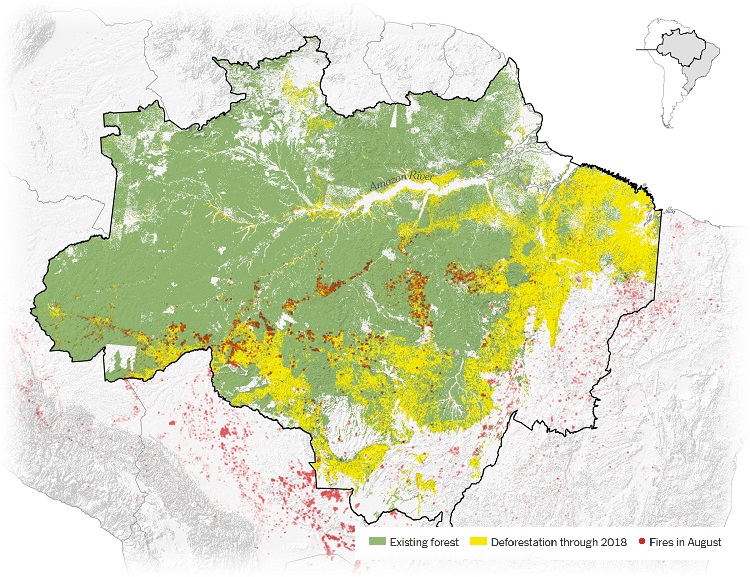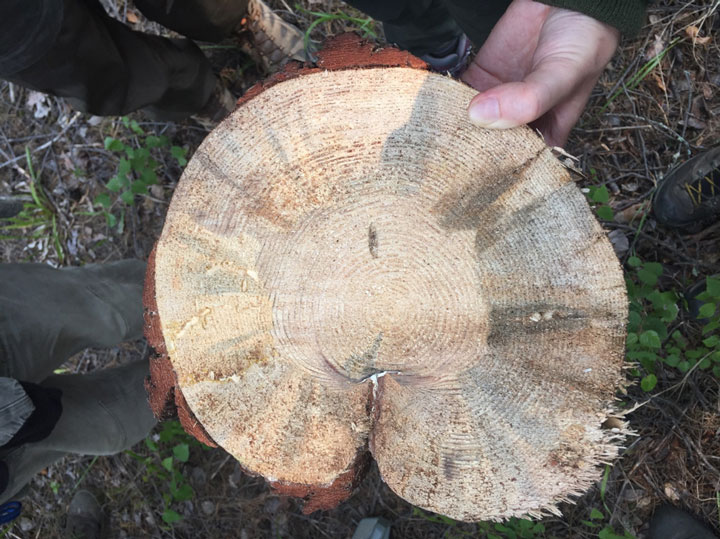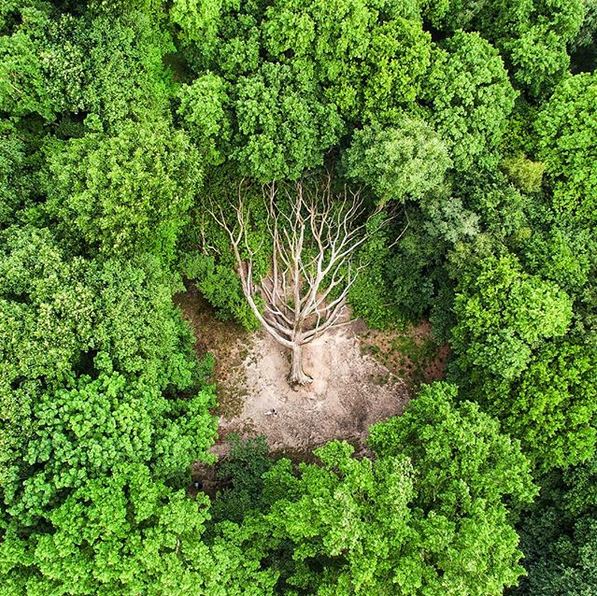Today, “If a Tree Falls” celebrates our one-year anniversary, with 12 monthly editions complete, encompassing over 150 unique curated articles.
Month: September 2019
Forest Wisdom XII
The trees thicken like enchanted things. Chestnut is quick: By the time an ash has made a baseball bat, a chestnut has made a dresser. Bend over to look at a sapling, and it’ll put your eye out. Fissures in their bark swirl like barber poles as the trunks twist upward. In the wind the branches flicker between dark and paler green. The globes of leaves sweep out, seeking ever more sun. They wave in the humid August, the way Hoel’s wife will still sometimes shake free her once-amber hair. By the time war comes again to the infant country, the five trunks have surpassed the one who planted them.
Richard Powers, “The Overstory”
Miscellaneous Links – September 2019
Israel forest fire threatens Christian transfiguration shrine
Forests Could Save Us From the Worst Storms
Italian Forest Rangers on the Hunt of ‘Escape Genius’ Bear
Bears and Wolves to Coexist in UK Woods in Conservation Project
Greta Thunberg takes climate fight to Germany’s threatened Hambach Forest
Wildfire Rages Through Forest in Spains Canary Islands (video)
Marginal Revolution on the ‘Vertical Forest’ (previous here)
Bolsonaro Blessed Brutal Assault on Rainforest, Sacked Scientist Warns
Purple Paint
From The University of Missouri Extension:
While some landowners still use the traditional “No Trespassing” signs, the Purple Paint Statute allows landowners to mark trees or posts with purple paint as a warning to would-be trespassers. Just like the “No Trespassing” sign or actual communication to individuals that no trespassing is allowed, the purple paint marks are considered to be adequate notice to the public that no trespassing is allowed on the property.
The purple paint law began in Arkansas in 1989 and Missouri enacted the same law during its legislative session in 1993. These statutes were enacted to provide landowners with an economical and easy way to keep out unwanted trespassers. The law does not require that property marked with the purple paint also be fenced, thus making it an economical alternative for landowners who do not otherwise need to fence their property. Additionally, it prevents problems encountered when using “No Trespassing” signs as purple paint marks can’t be taken down, destroyed, or even stolen.
Chuck Leavell

From Wikipedia:
Charles Alfred Leavell (born April 28, 1952) is an American musician. A member of the Allman Brothers Band throughout their commercial zenith in the 1970s…he has served as the principal touring keyboardist and de facto musical director of The Rolling Stones since 1982.
In addition to his musical career, Leavell is a tree farmer…an occupation that began when his wife, Rose Lane Leavell, inherited land in the early 1980s. Together they created Charlane Plantation, now a 2500-acre award-winning Tree Farm and hunting preserve. The Leavells are two-time Georgia Tree Farmers of the Year, and were selected as National Outstanding Tree Farmers of the Year in 1999. They are staunch supporters of sustainable forestry, conservation and environmental protection. Chuck wrote his first book, Forever Green: The History and Hope of The American Forest in 2000. His autobiography, Between Rock and a Home Place was published in 2005, and is acclaimed as one of the best rock autobiographies ever published. In 2006, Leavell wrote a children’s book, The Tree Farmer. His most recent book is Growing A Better America: Smart, Strong, Sustainable (2011, with J. Marshall Craig), the theme of which is “smart” growth. It has been called one of the best “common sense environmental books of all time”.
Amazon Fires

From Bloomberg:
Fires are raging across the country. Deforestation rates reached startling highs in July. An escalating trade dispute with the U.S. could force China to lean even more heavily on Brazil—already its top supplier of soy. And it all comes as Brazil’s far-right populist president, Jair Bolsonaro, has pledged to open up the 2-million-square-mile forest—including in protected indigenous areas—to more farming and mining.

From The New York Times:
Scientists studying satellite image data from the fires in the Amazon rain forest said that most of the fires are burning on agricultural land where the forest had already been cleared.

From NASA Earth Observatory:
The map above shows active fire detections in Brazil as observed by Terra and Aqua MODIS between August 15-22, 2019. The locations of the fires, shown in orange, have been overlain on nighttime imagery acquired by VIIRS. In these data, cities and towns appear white; forested areas appear black; and tropical savannas and woodland (known in Brazil as Cerrado) appear gray. Note that fire detections in the Brazilian states of Pará and Amazonas are concentrated in bands along the highways BR-163 and BR-230.
From Washington Post: The Amazon is burning. Bolsonaro says his critics are setting the fires, to make him look bad.
Siberian Fire Expedition

We aimed at finding old pine trees in burned and unburned sites, which we then core with tree borers to build tree-ring chronologies. Wildfires in this western part of the Siberian boreal forest usually don’t burn with high intensity allowing some resilient trees to survive multiple fire cycles. Thus, we aimed at using the chronologies to reconstruct the fire history of the area and to assess the response and recovery times of the ecosystem after fire events and other disturbances.
Fallen Tree
From The Daily Overview:

Superwood!
From Scientific American:
The results are impressive. The team’s compressed wood is three times as dense as the untreated substance, Hu says, adding that its resistance to being ripped apart is increased more than 10-fold. It also can become about 50 times more resistant to compression and almost 20 times as stiff. The densified wood is also substantially harder, more scratch-resistant and more impact-resistant. It can be molded into almost any shape. Perhaps most importantly, the densified wood is also moisture-resistant: In lab tests, compressed samples exposed to extreme humidity for more than five days swelled less than 10 percent—and in subsequent tests, Hu says, a simple coat of paint eliminated that swelling entirely.
Tree Gaps and Orchard Problems
From Numberphile via YouTube: Tree Gaps and Orchard Problems